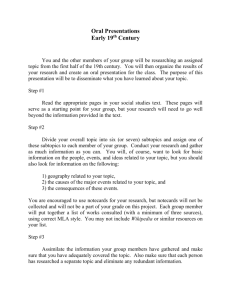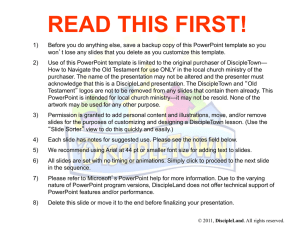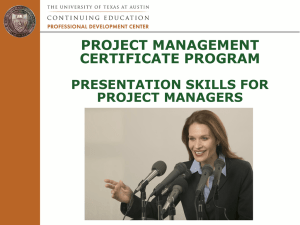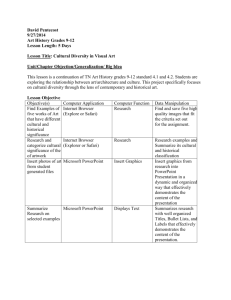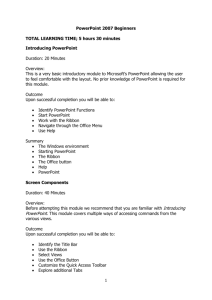Lesson Plan Relevance To Externship
advertisement
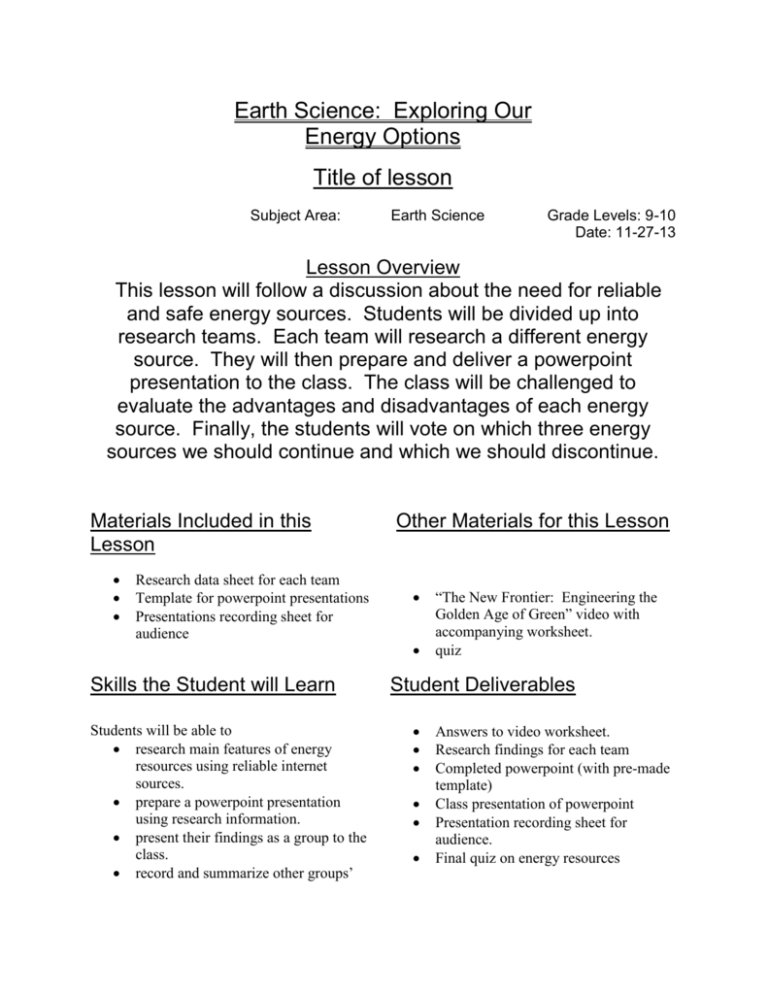
Earth Science: Exploring Our Energy Options Title of lesson Subject Area: Earth Science Grade Levels: 9-10 Date: 11-27-13 Lesson Overview This lesson will follow a discussion about the need for reliable and safe energy sources. Students will be divided up into research teams. Each team will research a different energy source. They will then prepare and deliver a powerpoint presentation to the class. The class will be challenged to evaluate the advantages and disadvantages of each energy source. Finally, the students will vote on which three energy sources we should continue and which we should discontinue. Materials Included in this Lesson Research data sheet for each team Template for powerpoint presentations Presentations recording sheet for audience Skills the Student will Learn Students will be able to research main features of energy resources using reliable internet sources. prepare a powerpoint presentation using research information. present their findings as a group to the class. record and summarize other groups’ Other Materials for this Lesson “The New Frontier: Engineering the Golden Age of Green” video with accompanying worksheet. quiz Student Deliverables Answers to video worksheet. Research findings for each team Completed powerpoint (with pre-made template) Class presentation of powerpoint Presentation recording sheet for audience. Final quiz on energy resources 2 findings. Evaluate the advantages and disadvantages of each energy resource. Length of Lesson: 10 Days Activity Day One Class opens with a discussion of all ways we use energy in our lives. Questions posed to class include: 1. What are all the ways you use energy in your lives? 2. What would a day be like without being able to use electricity? Or gasoline? 3. Where do we get most of energy from? Students are introduced to the project of researching and then presenting a powerpoint about an energy source. Activity Day Two Watch and discuss alternative energy technologies highlighted in the film “The New Frontier: Engineering the Golden Age of Green.” Activity Day Three Split up into groups and begin researching energy source in computer lab. Activity Day Four Continue to research energy source. Once students have filled out research data sheet, they will be sent a powerpoint template to fill in with their own research information. Activity Day Five Student groups complete their powerpoint projects. Activity Day Six Students practice how to present their projects to the class. Instructional assistants and I coach each team with basic presentation skills including facing the audience, speaking clearly and behaving professionally. Activity Day Seven Groups deliver powerpoint presentations to the class. Audience members record main features of each energy source. Activity Day Eight 3 Students continue with powerpoint presentations and audience notes. Activity Day Nine As a class, we discuss the “best” and “worst” energy sources by analyzing the advantages and disadvantages of each. We also talk about challenges of the entire energy project itself underscoring the need for teamwork and effective communication. Activity Day Ten Students complete their energy quizzes and vote as a class the top three and bottom three energy resources for the future. Enrichment Suggestions Field trip(s) to local power plants and/or biodigester. Student Resources http://www.cleanworld.com/ http://www.smud.org http://www.need.org Foundation Academic Standards 2.0 Communications Students understand the principles of effective oral, written, and multimedia communication in a variety of formats and contexts. 2.4 Listening and Speaking: Use effective and interesting language, including informal expressions for effect. 2.6 Deliver multimedia presentations: Combine text, images, and sound and draw information from many sources. Use the selected media skillfully, editing appropriately and monitoring for quality. Test the audience’s response and revise the presentation accordingly. 9.0 Leadership and Teamwork Students understand effective leadership styles, key concepts of group dynamics, team and individual decision making, the benefits of workforce diversity, and conflict resolution: 9.1: Understand the characteristics and benefits of teamwork, leadership, and citizenship in the school, community, and workplace settings. 9.3: Understand how to organize and structure work individually and in teams for effective performance and the attainment of goals. 9.4: Know multiple approaches to conflict resolution and their appropriateness for a 4 variety of situations in the workplace. 9.5: Understand how to interact with others in ways that demonstrate respect for individual and cultural differences and for the attitudes and feelings of others. CTE Standards Energy and Environmental Technology Pathway B1.0: Students understand energy resources and the effects of these resources and systems on the environment: B1.1: Know how to classify various conventional energy resources by type: depletable, nondepletable, renewable, and nonrenewable. B1.2: Know the new and emerging energy resources. B1.3: Understand the advantages and disadvantages of energy resources in terms of the effects on the environment. B2.0: Students understand the environmental implications of energy conversion processes and energy transmission systems: relate to activities across the environment. B2.5: Understand the basic principles of energy systems: chemical, hydraulic, pneumatic, electrical, nuclear, solar, wind, and geothermal. Lesson Plan Relevance To Externship My externship took place at Cleanworld, which is a green energy company. Cleanworld operates a number of biodigesters which take organic materials and digest them, producing methane (renewable natural gas) in the process. This technology is an important example of how our energy needs can be met in a clean and environmentally friendly way. 5 Rubric for the (title) Project Student Deliverables 1 Exceeds Expectations 2 Meets Expectations 3 Approaches Expectations 4 Fails to meet Expectations


